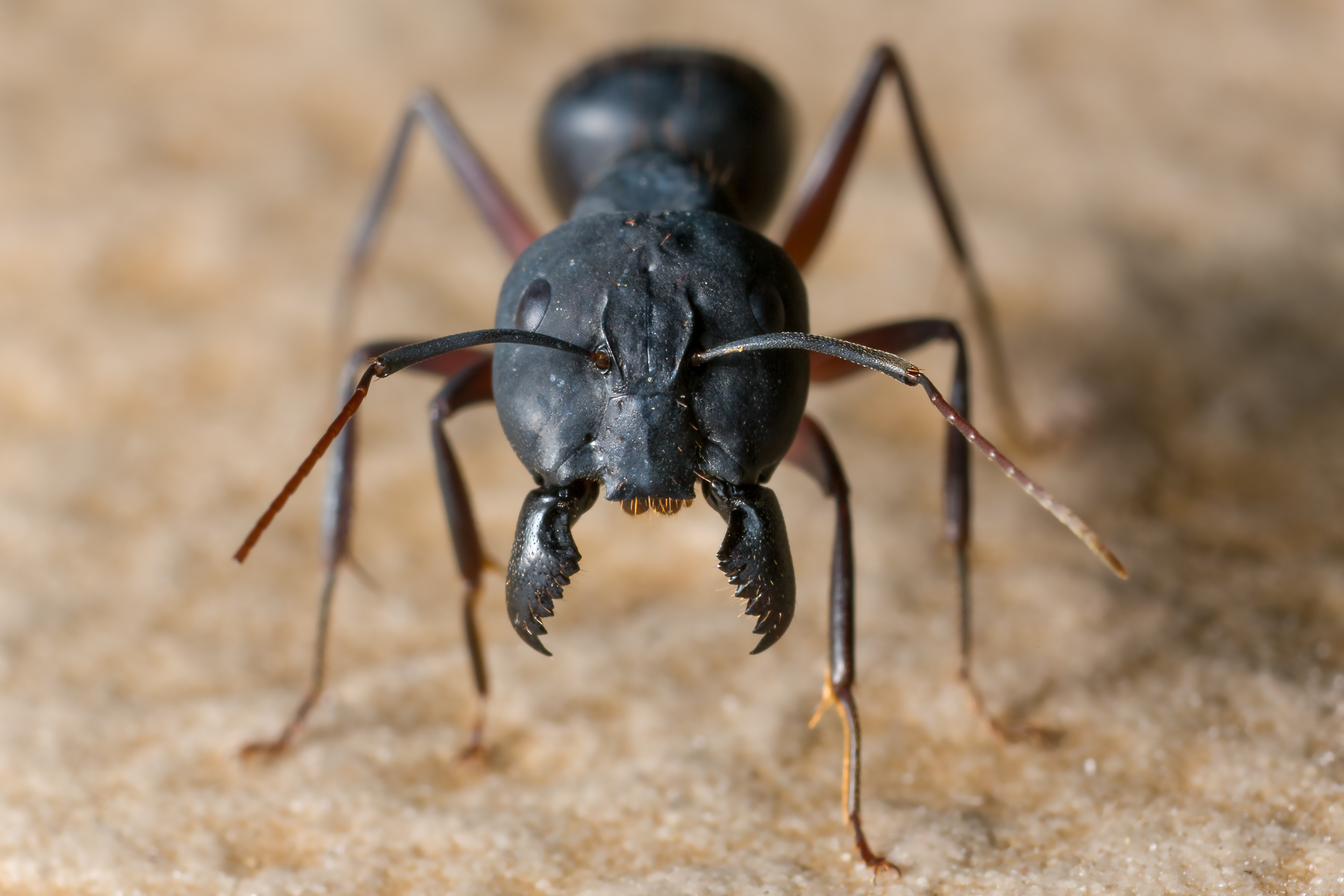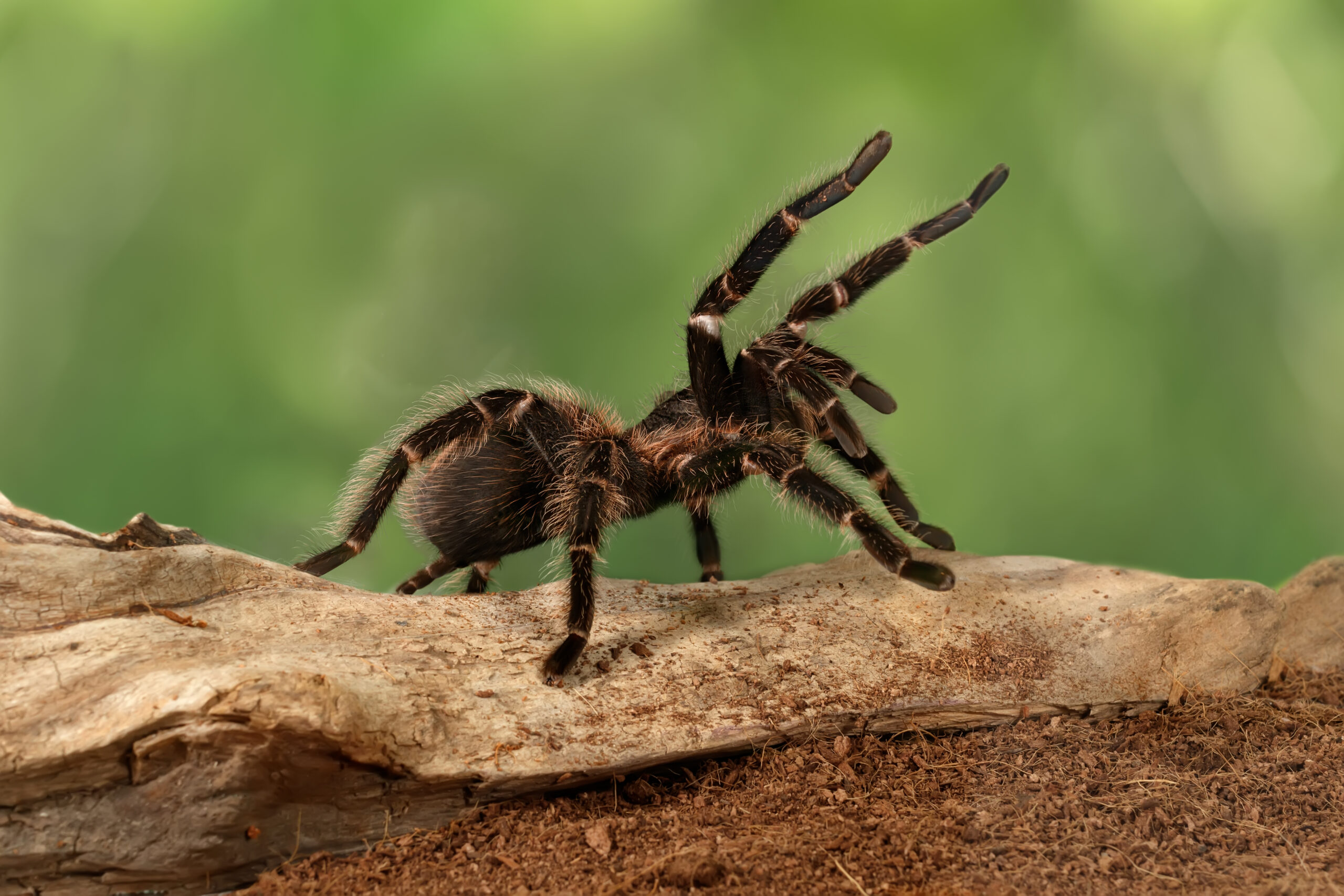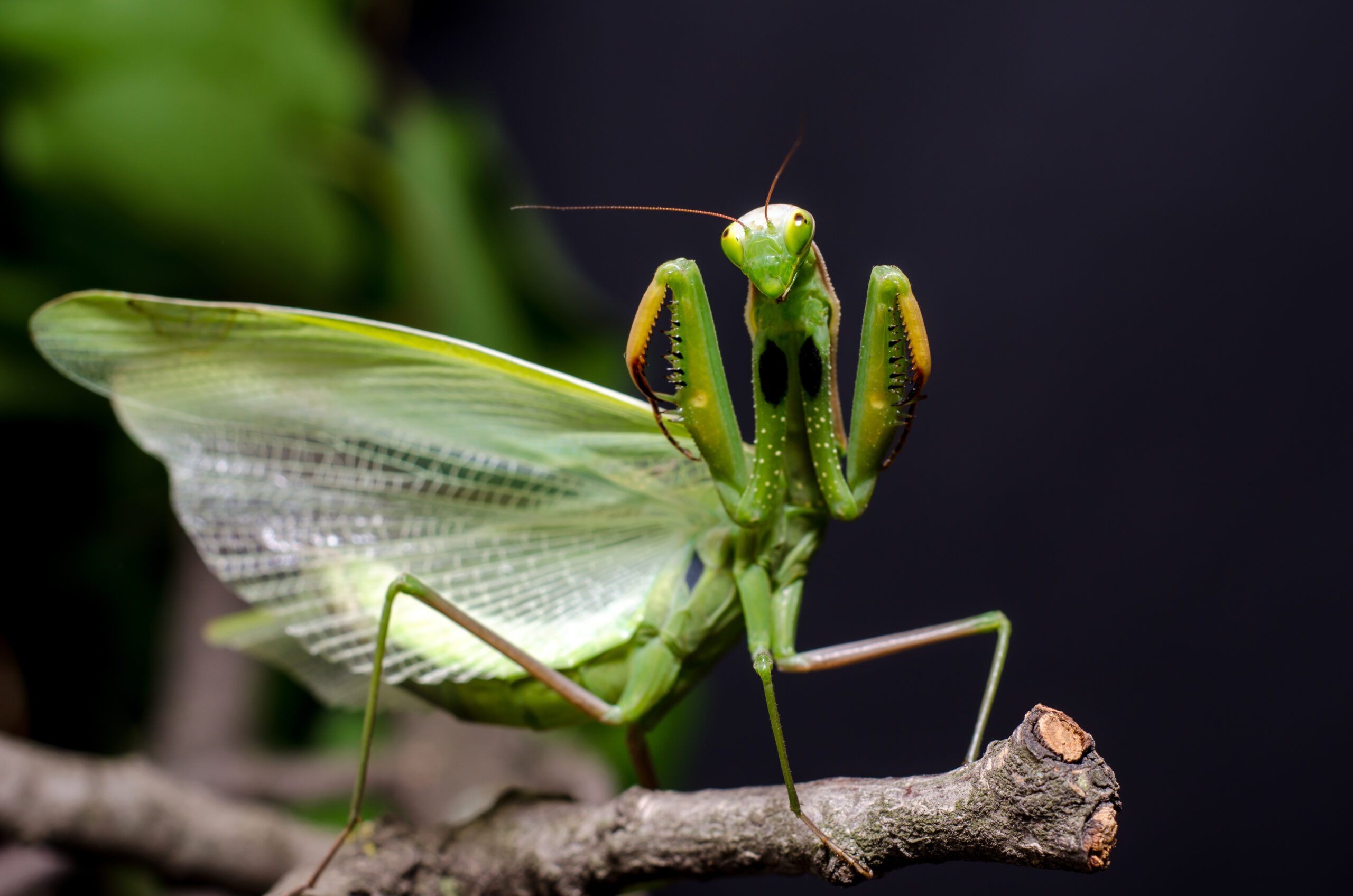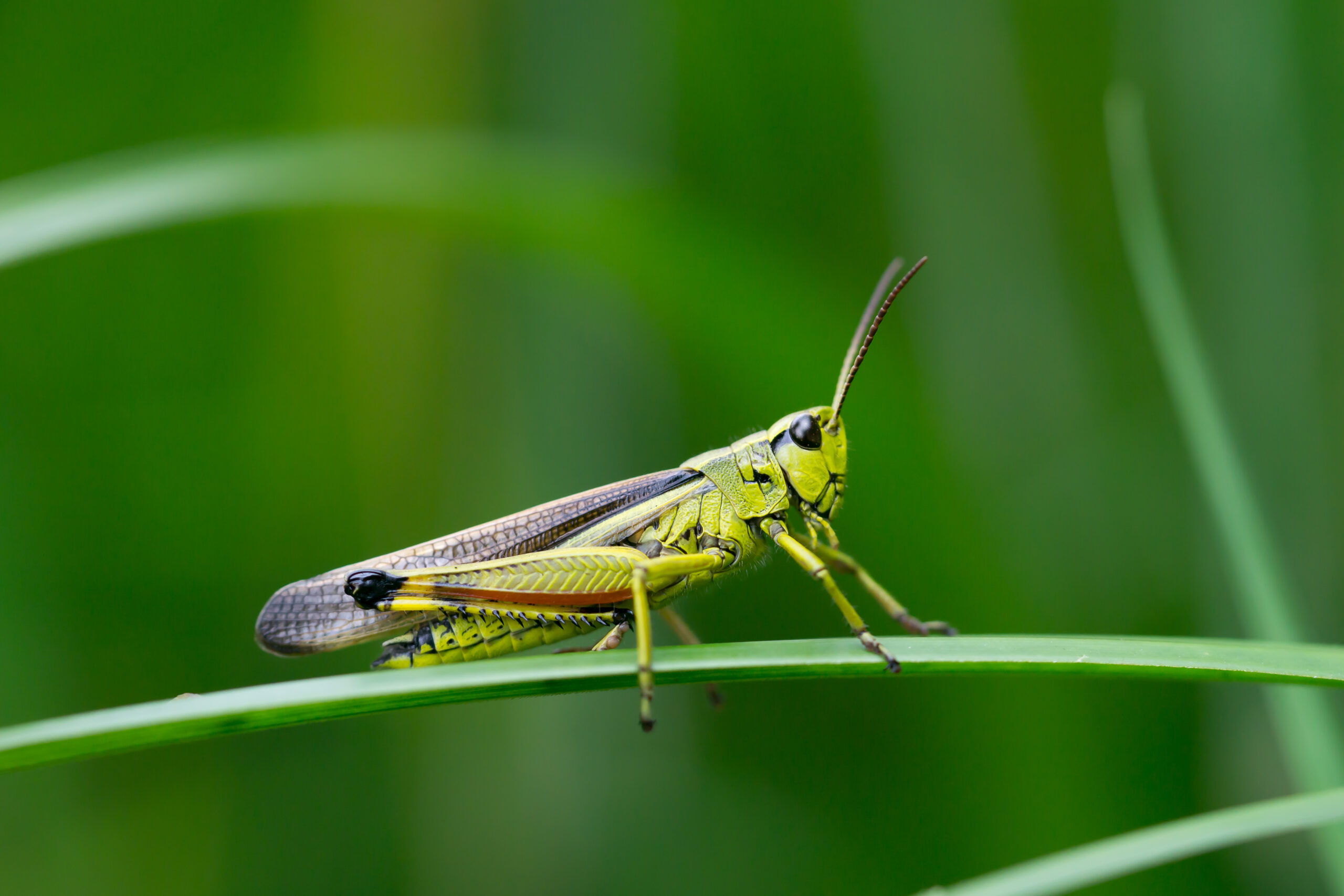The Bold “Big Bug Movies” of the 1950s
The Bold “Big Bug Movies” of the 1950s
Monster movies are one of the earliest film genres and therefore experienced alternating rises and falls in popularity over the years. This is largely because the subject of these movies — aka the monster — has evolved to be the most random and unbelievable creatures anyone could imagine. A giant gorilla or shark is one thing, but a man-fly or tentacle-laden monster stretches the believability of the story just a bit too far for some people. That being said, a specific type of monster movie boomed in the 1950s: insect monster movies, aka “big bug” movies. These films are centered around monstrous insects and arachnids that terrorize whichever city the movie takes place in, with the main idea of the film typically being how science or nature can go horribly wrong. Let’s take a look at the key themes and facts of this movie trend before we dive into five of the most popular “big bug” movies and see how they portray some of our most common pests.
The Basics of the Bug Blockbusters

It’s fun to throw on one of these “big bug” movies today and delight in the extremely outdated special effects, but there is a larger legacy within these films. The traditional black-and-white coloring adds the perfect tinge of drama to each movie, despite the fact that it was the only option for films back then. The whole idea behind these stories is taking the ordinary and putting the most imaginative spin on it possible. We see plenty of spiders and insects in our everyday lives, but these films essentially ask the question: what if those creatures were the size of a bus and had a vengeful appetite to boot? Insects and spiders already creep out many people, so it is only natural to create a monster movie/science fiction film combination based on the idea of a giant pest. Audiences often approach “big bug” movies with the same apprehension that they would with real bugs, but the unease is even worse since these fictional creatures are far more unpredictable than our real pests.
“Big bug” movies are undeniably a product of their times, as they demonstrate two evident qualities of the post-WWII 1950s. The first (and most obvious) is everything regarding the Atomic Age. After the development, testing, and use of the atomic bomb, the fears and concerns regarding radiation were at the forefront of many people’s minds. There were still a lot of unknowns with radiation, so “big bug” movies capitalized on this by using the unhelpful answer of “radiation” to answer the question of how these monstrous creatures grew so large. The general public was already wary of science and these weapons, so it was easier to buy into the idea that radiation created these fictional monsters. Another piece of 1950s influence on these films is the supersizing of virtually everything. After the war ration requirements ended, people wanted access to everything bigger and better. Businesses, buildings, cars, houses, and food options were all larger than ever. If everything in real life is getting larger by the day, then why not make the otherwise tiny insects larger than life too?
With all of these themes and circumstances in mind, let’s take a look at five of the most popular “big bug” movies from the titular era. These films are not meant to be studied as fully-accurate depictions of the starring bugs, but that doesn’t mean we can’t take note of the wildest qualities of each creature!
Them! – 1954

When we talk about “big bug” movies, Them! is the first one that comes to mind for many people. It is only fitting, considering the fact that this is the movie that set the precedent for all of the “big bug” movies to follow. The main plot is that atomic testing mutated some nearby ants, causing them to grow to be 15 feet long with a mean attitude. The species is said to be camponotus vicinus, which is a real species that is common to dry and sunny places. They are quite populous in New Mexico, which is accurately depicted in the movie since the bomb test sites that are responsible for the radiation-contaminated ants are located in New Mexico. The fictional ants are resistant to bullets, but — fortunately for the heroes — not fire or gas. They are eventually brought to an end before they can harm any more people than they already have, but it is not a traditional happy ending. The wariness of atomic radiation remains as the main characters question the future of this “atomic age” and what horrors may emerge from the extended use of radiation.
Of course, we now know that radiation will not cause ants to grow to the size of a full-sized sedan, but that doesn’t detract from the entertaining horrors of this film. In reality, camponotus vicinus behave like normal ants and are (thankfully) only 1/4 to 1/2 of an inch long. They primarily feed on sweet fruits, honeydew from aphids, nectar, and other insects. These ants have strong mandibles that they use to inflict painful bites onto their enemies, so this quality was definitely utilized in Them! on a different level. Another ability that real camponotus vicinus have is that they can shoot formic acid into the bite wound for an extra burn. This was also used in the film, but since the ants are supersized, the amount of formic acid they produced was also dangerously high. This is one of the few “big bug” movies that did not use real insects for those shots, and it is humorously obvious now. The talented crew members created two kinds of models, one with a full ant body and one with the front half of an ant. The result may look like some giant ant puppets to us today, but they were praised enough to gain the film an Oscar nomination for Best Special Effects in 1954. Between the inclusion of accurate ant queens and the usage of formic acid, Them! is not the furthest movie from the truth by a long shot.
Tarantula! – 1955

Anyone who has arachnophobia will want to stay far from this film, especially since the titular tarantula is clearly a real spider that was filmed in different perspectives to make it seem larger than life. The monstrous tarantula became that way after it was injected with a radioactive serum in a lab, then escaped and continued to grow with every meal it devoured. The serum itself is interesting since it has different effects depending on the species that takes it. Humans experience dire effects that require a cure, while animals just grow to unprecedented sizes. The tarantula avoids detection from the main characters for a comically long amount of time, which adds to the tense yet fast-paced storytelling of the film. It seems strange to think of a classic “big bug” movie as having more suspense than many modern films, but that is exactly what Tarantula! accomplished through its dynamic storytelling and creepy-crawly monster.
Contrasted with Them!, this movie was made possible because of a real creature. The actual tarantula — of a normal size — was used on both matting and miniature sets to create the effect of a giant tarantula storming the city. Real tarantulas are hunting spiders that hide in burrows when they are not on the prowl, and their specific diets depend on their own size. Smaller tarantulas eat little invertebrates and insects, while larger ones will eat small vertebrates, like frogs and rodents. This “big bug” movie is accurate in how its tarantula hunts for its meals and rarely creates webs. However, its insatiable appetite for humans is fortunately not true to life, as actual tarantulas prefer to hide from anything larger than them if they are found in the wild. The fictional tarantula meets its highly-anticipated end when it is bombarded with napalm, which we suspect would work against real tarantulas as well (but do not recommend trying). Tarantula! has a decent amount of truth to its depiction of tarantulas, but it still succumbs to the throes of “movie magic” from this time period. To close this out, a fun yet random fact about this film is that you can spot a young Clint Eastwood in an uncredited role as a fighter pilot at the end!
The Deadly Mantis – 1957

If we had to choose one movie from this list as the most inaccurate depiction of the real-life pest, it would have to be The Deadly Mantis. Don’t get us wrong, it’s still a classic “big bug” movie that has all of the charm of that genre. But the giant praying mantis that preys on civilization is not exactly true-to-life. Instead of being impacted by radiation, the reason why this praying mantis is so massive is because it is prehistoric and was driven from the Arctic to New York due to a volcanic eruption. It can fly like a real mantis, but this monster is also immune to bullets and weapons. The deafening roars that it constantly releases are more typical of a fictional alien monster than the patient praying mantis. It is only killed when a jet rams it into the ground, which is quite the victory for the heroes but a jarring ending for a major “big bug” movie.
The premise of this film is interesting, given the fact that actual praying mantids are harmless to humans. However, this only results in the consequence of the monstrous insect being so far removed from the real insect that it feels like an entirely new creation. The fictional insect, primarily portrayed by man-made models, has an inaccurate mouth and lacks antennae. It looks more like the idea of a mantid than the actual insect, in all honesty. However, the inaccuracies do not stop with the monster’s appearance. The fictional insect obviously hunts its prey, but not at all how real praying mantids hunt for their own meals. The monster hunts for its human prey by sporadically flying around, roaring, and grabbing its meal before devouring it. On the flip side, actual mantids hunt by playing the waiting game and staying in their famous “praying” pose until an unsuspecting insect wanders by, prompting the mantis to stab it with its spiny foreleg and incapacitate it before chowing down. All of these inaccuracies come to a culmination in the fact that the only real insect used for filming is in the scene where it “crawls” on the Washington Monument. Otherwise, the size of this beast changes throughout the film and seems to only be at its largest when the film needs it to be.
Beginning of the End – 1957

With such an ominous title, you would expect this to be the most realistic and therefore the scariest to watch, right? Well, not so much. Grasshoppers are major pests that could ruin a farmer’s entire growing season if they are left alone to feast, so there is some truth to the fact that they are menaces to society. The fictional grasshoppers reach their monster status after a scientist uses radiation to grow farm vegetables, and the pests inevitably devour the radiation-laden crops. They travel from the rural farm to Chicago, where the classic “big bug” scenes of insect monsters terrorizing civilians begin. The main characters choose not to use radiation to fight the giants since they are already full of the stuff. Instead, they record the calls of a captured grasshopper monster (don’t ask) and use those sounds to lure the rest of the grasshoppers to their doom in a lake. To make matters worse, the vegetables aren’t even safe for humans to consume, so the whole point of the experiment is lost.
The Beginning of the End is one of those films that is clearly impacted by the behind-the-scenes processes that occurred. The trouble began with getting the real grasshoppers for filming since they had to somehow transport them from Texas to California. However, there are multiple rules on carrying certain animals across state lines in order to prevent new creatures negatively impact the local ecosystem. The live grasshoppers had to all be males to adhere to the rules, which is why they turned cannibalistic and ate each other before filming even began. What was originally 200 grasshoppers became 20, which lessened even more throughout filming. This is why the movie depicts fewer monstrous grasshoppers over time, as the real insects were not surviving the process. It is true that actual grasshoppers can fly, call to one another through stridulation, and are one of the worst crop pests in history. These traits were clearly elevated in the movie, along with one other notable fact. The oversized pests drowned in the lake once they fell into the trap, and real grasshoppers can’t swim either! This may be a cheesy “big bug” movie, but at least it got some of the facts right.
Earth vs. The Spider – 1958

This film also stars a massive tarantula, but make no mistake: it is not a remake of Tarantula! and actually leaves the audience with more questions than answers compared to the first spider-themed “big bug” movie. In this movie, the spider emerges from its cryptic hiding spot within some caverns in search of food. You can probably guess the calamity that ensues as a result, making for a chilling “big bug” movie with slightly more advanced technology than its predecessors. However, unlike the other movies on this list, the origins and statistics of this spider are completely unknown. It is never revealed how this spider grew so large, why it is such a monster of an arachnid, and why it looks far larger in town than out in the middle of nowhere (that one could just be an error in the filmmaking process). All we know is that it does not survive the brutal end that the heroes planned for it. But, then again, what tarantula could survive being electrocuted, stabbed by stalagmites, and buried underground?
The starring spider of Earth vs. The Spider is also a tarantula, but it is a more generalized idea of the creature than the one in Tarantula!. However, it does still have the typical hunting practices of a real tarantula, even though its meals are humans instead of insects. The tarantula monster stalks its prey and is always on the move, so it is realistic to actual hunting spiders in this regard. Real tarantulas like to live in burrows underground where they can hide from predators and bad weather, so the fact that this beast came from a cavern is also believable. The matting of the tarantula that the crew used for filming is a bit more obvious than the other films and makes it look like a small tarantula that was placed on some photos, so the immersion factor of the film is not quite there anymore. If you watch the monster in certain scenes, you can even see its legs become transparent and disappear due to the matting process. However, the largest deviation from reality is in how the characters refer to this giant spider. It is constantly referred to as an “insect,” which is completely false since tarantulas and other spiders are arachnids. But we suppose that is just a product of these films, seeing as how these arachnids are just flexible enough to be featured as monsters in the esteemed group of “big bug” movies.
Green is No Stranger to Battling Bugs
While our common pests may not be as massive or radiation-ridden as these fictional creatures, they can still cause a world of issues for any homeowner and business-owner. Some, like ants and roaches, contaminate our kitchens in their desperate searches for food. Others, such as rodents and termites, can cause major damage to our homes and buildings by chewing through the essential components. Whatever pests are plaguing your life, Green Pest Services is always here to help! Our technicians are all highly-trained in the safest and most efficient ways to solve a multitude of pest problems, and we are dedicated to keeping our clients pest-free all year long. Contact us today to learn more about our non-toxic treatments and say goodbye to your larger-than-life pest nightmares!
***Disclaimer: Section 107 of the United States Copyright Act recognizes “fair use” copywriter content as such: “Notwithstanding the provisions of sections 106 and 106A, the fair use of a copyrighted work, including such use by reproduction in copies or phono-records or by any other means specified by that section, for proposes such as criticism, comment, news reporting, teaching, scholarship, or research, is not an infringement of copyright.” This blog post may contain certain copyrighted works and characters that were not specifically authorized to be used by the copyrighted holder(s), however, the content on this post qualifies as “commentary” on the copyrighted works under the “fair use” doctrine of the U.S. Copyright Act and is thereby protected by federal law. Furthermore, we do not claim any ownership or creative rights of any characters on this list, and all rights outside of the fair use doctrine belong to the respective owner(s).
Citations
Cloyd, R. (2015, January). [Hollywood Hits] Secrets of the “big bugs.” Pest Control Technology. Available at https://www.pctonline.com/article/pct0115-insects-science-fiction-movies/ (Accessed on August 28, 2023).
Film / Tarantula! (n.d.). TV Tropes. Retrieved August 28, 2023, from https://tvtropes.org/pmwiki/pmwiki.php/Film/Tarantula
Film / Them! (n.d.). TV Tropes. Retrieved August 28, 2023, from https://tvtropes.org/pmwiki/pmwiki.php/Film/Them
Film / Beginning of the End. (n.d.). TV Tropes. Retrieved August 28, 2023, from https://tvtropes.org/pmwiki/pmwiki.php/Film/BeginningOfTheEnd
Film / Earth vs. the Spider. (n.d.). TV Tropes. Retrieved August 28, 2023, from https://tvtropes.org/pmwiki/pmwiki.php/Film/EarthVsTheSpider
Film / The Deadly Mantis. (n.d.). TV Tropes. Retrieved August 28, 2023, from https://tvtropes.org/pmwiki/pmwiki.php/Film/TheDeadlyMantis
Gumeny, E. (2019, May 9). How Them! and the atomic insect movies of the ‘50s changed Hollywood forever. SYFY. Available at https://www.syfy.com/syfy-wire/how-them-and-the-atomic-insect-movies-of-the-50s-changed-hollywood-forever (Accessed on August 28, 2023).
Hadley, D. (n.d.). 10 fascinating facts about grasshoppers. Magnuson Children’s Garden. Available at https://magnusonchildrensgarden.org/wp-content/uploads/2020/04/10-Fascinating-Facts-About-Grasshoppers.pdf (Accessed on August 29, 2023).
Klotz, J.H., Rust, M.K., & Hansen, L.D. (2009, August). Carpenter ants. UC IPM. Available at https://ipm.ucanr.edu/PMG/PESTNOTES/pn7416.html (Accessed on August 29, 2023).
Looking straight at Them! Understanding the big bug movies of the 1950s. (n.d.). History Cooperative. Retrieved August 28, 2023, from https://historycooperative.org/journal/looking-straight-at-them-understanding-the-big-bug-movies-of-the-1950s%EF%BF%BC/
McLendon, R. (2021, April 16). 8 incredible facts about tarantulas. Treehugger. Available at https://www.treehugger.com/tarantula-facts-5083886 (Accessed on August 29, 2023).
Out of the woodwork: Attack of the big bug movies. (2011, June 5). Grand Old Movies. Retrieved August 28, 2023, from https://grandoldmovies.wordpress.com/2011/06/05/out-of-the-woodwork-attack-of-the-big-bug-movies/
8 Creative Ways to Have a Pest-Free Fourth of July
8 Creative Ways to Have a Pest-Free Fourth of July 8 Creative Ways to Have a Pest-Free Fourth of July Summary: The Fourth [...]
A Simple Guide to Preventing Stinging Pests
A Simple Guide to Preventing Stinging Pests A Simple Guide to Preventing Stinging Pests Summary: Stinging insects are more active in warm weather, [...]
These 10 Natural Mosquito Repellents Can Actually Help
These 10 Natural Mosquito Repellents Can Actually Help These 10 Natural Mosquito Repellents Can Actually Help Summary: Natural mosquito repellents are easier to [...]
How to Get Rid of Carpet Beetles
How to Get Rid of Carpet Beetles How to Get Rid of Carpet Beetles Summary: Carpet beetles are sneaky pests that don’t usually [...]
How Do Roaches Affect Asthma and Allergies?
How Do Roaches Affect Asthma and Allergies? How Do Roaches Affect Asthma and Allergies? Summary: It’s no secret that pests impact human health, [...]
These 5 Carnivorous Pests Might Surprise You!
These 5 Carnivorous Pests Might Surprise You! These 5 Carnivorous Pests Might Surprise You! Summary: There are many eco-friendly ways to prevent pests, [...]

